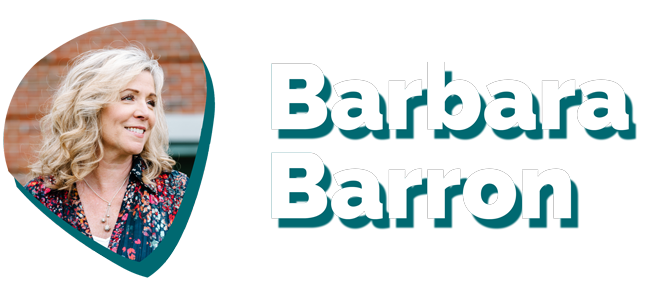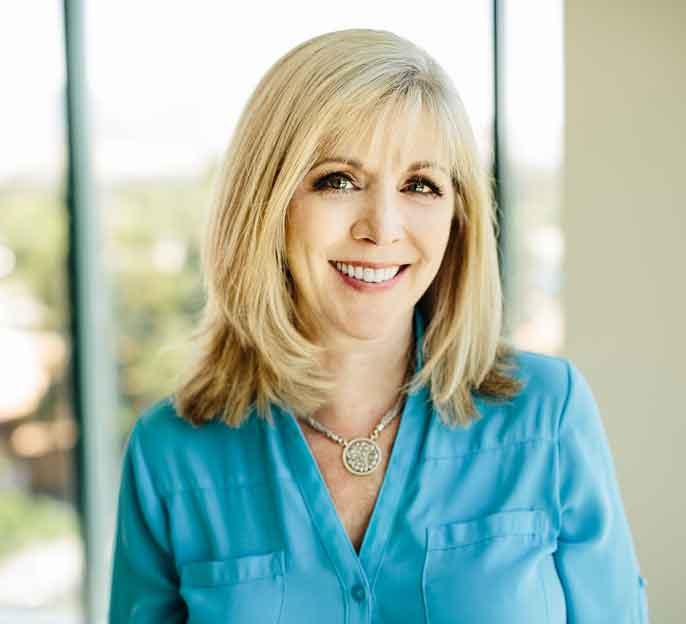by Barbara Barron | Posted February 7th, 2018
This may come as a bit of a shock, but I’m not looking to be your school’s fundraising consultant forever.
Obviously if you and I were to start work on a long-term project, like a feasibility study for an upcoming capital campaign, or creating of major gifts program from the ground up — I would be whistling a different tune.

But otherwise, no. I’m not looking for a permanent gig. In fact, I’m trying to do the opposite.
Why, Barbara? Why!?
It’s simple, really. If I’m still haunting the halls of your school after a couple of years, I’ll feel like I’ve failed in delivering on my central promise.
And what is that central promise, you ask? It’s this:
As a Fundraising Consultant, I consider it part of my duty to help you and your school become self-sufficient. In other words, I want you to be successful without me.
“But Barbara,” I hear you saying, “we’ve been working with [Person X] for fifteen years. And [Consultant Firm Y] has had our backs for decades now. Why would your approach be so drastically different?”
My answer lies within a paradigm I simply don’t buy: many consultants and consulting firms, as good as they are, are set up to create a need that can never be truly filled.
It’s not their fault. Their business model is to become indispensable. And from their perspective, that makes good sense. In fact, a lot of the time, it’s mutually beneficial. It’s certainly not a burden for a well-financed school.
But what if we’re not a well-financed school? What if we can no longer bear the expense of retaining consultants without it eating into our programming? What if we’re essentially using our donors gifts to pay our highly paid consultants?
These are crucial questions. And if you find yourself asking them, I know how you feel, because I’ve been there before.
Not long ago, I was a Director of Development working with an outside consultant.
I was never busier. I had an endless list of “to dos” being fed to me. Truthfully, some of these “to dos” were helpful. And I did genuinely learn from the experience. But most of these activities didn’t actually move our project forward.
Instead, they kept me busy at my desk, collating lists or coding donor’s records. I wasn’t doing the crucial work of meeting with donors, hearing their stories, and thanking them for their support.
Did the outside consultant take advantage of me? No.
Did the relationship have set expectations and end when it should have? Probably not.
After that happened, I resolved that I would never put myself in that situation again. I also resolved that, should I go out alone and be a fundraising consultant for hire, I would do everything I could to make sure I wasn’t doing the same thing that consultant did to me.
Okay. Let’s say, for the art of argument, that you do hire a fundraising consultant, and for some reason you don’t hire me. (Hmm…)
Here’s the burning question: what can you do from the very beginning to make sure that you and your school don’t fall into the dreaded whirlpool of endless consulting?
A few things, actually. And you can do them earlier than you think…
Here’s how it works.
Sometimes we find consultants. Other times, consultants are thrust upon us.
Regardless of which of those situations you end up in, it’s crucial for you to understand that you do have power. Remember that. You may not have total control over everything – does anyone? – but you can guide this new, sometimes scary process simply by being forward thinking about it. Right here. Right now.
Here’s how: the minute a consultant is brought up, either by you, or your co-worker, or you well-meaning Head of School, consider this consultant as you would a contractor. After all, that’s pretty much was a consultant is, right? Right!
You wouldn’t hire someone to gut and replace the plumbing of your faculty restroom without setting a timeline and a budget, would you? Of course you wouldn’t.
Do the same thing here.
Define the dimensions of the project from the very get-go. Establish a timeline. Set a budget.
I’m going to break that down, just because it’s so simple, yet something that so many people overlook. So here it is again, in a numbered list:
- Define the dimensions.
- Establish a timeline.
- Set a budget.
All three are essential, but I think number two is the most important, by far.
Why? Because number two is what keeps a consultant a consultant, not an employee. The job must have an end date. We in schools are very comfortable working in terms of calendars – it’s so easy to do. You simply have to make it a priority to do it!
So what does this end date signify? A good question. Think of it as the day by which the dimensions agreed upon – in criteria #1, above – must be realized. Either the consultant knocks it out of the park and exceeds your expectations (yay!) or misses the deadline and walks away.
Or, in the rare instance in which something goes wrong that is totally out of anyone’s control, you agree to regroup and make a new deal. This is also acceptable, but only when the goalposts truly moved. Please don’t make a habit of it.
How is this sounding for you? Practical, right? Practical. You have no idea how freeing it is, on the both sides, to do all this.

Okay. So now we have our new, super healthy framework for outside consulting. Feels good, doesn’t it?
I’m going to add one last tip here, since I think it’s such a yummy idea…
When the “consultant idea” is first being discussed, why not put your best foot forward and float this big question to a trusted stakeholder:
“Dear Trusted Stakeholder, are you willing to make a gift specifically to underwrite the consultant’s fee for a specific purpose and time frame?”
If they say yes, it’s a win-win-win, isn’t it? Take a look:
Win #1: Your donor gets to support a very specific project that he or she adores.
Win #2: You and your team get to benefit from some sharp professional advice.
Win #3: Your budget doesn’t take a hit.
Wow! Who says you can’t have it all, right? Certainly not me.
All it takes, as always, is a little bit of insider knowledge and a healthy dose of forward-thinking. So good on you for taking the time today to get a fresh perspective on our work! Don’t forget to share the knowledge. It’s the only way we can all get better together.
My name is Barbara Barron, and I’m writing this blog to share advice on a profession that I adore.
I’ve been working in the field of Independent School Advancement for nearly 20 years. In that time, I’ve had the pleasure of creating and implementing successful Strategic Fundraising Plans for so many incredible schools. I’ve had the privilege of seeing real growth at The Carey School, Marin Primary & Middle School, Woodside Priory, Crystal Springs, Presidio Knolls and others. (Maybe we’ve met!)
Nothing makes me happier than seeing a struggling school start to thrive. My hope is that you’re here to make a positive change as well. I hope my advice can be a part of that change.
Shoot me an e-mail if you want to swap tips, or share your voice here.
Let’s do this, together.



